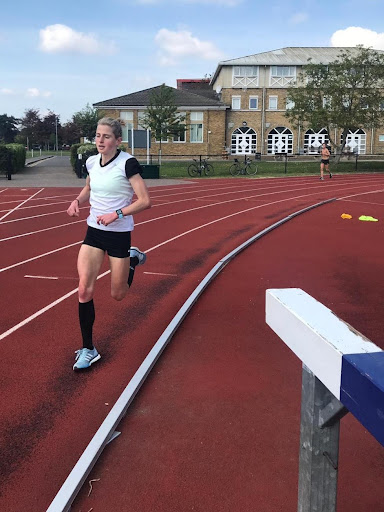Speed for Long Distance Running
Speed work means different things to different people, but for a long distance runner this should be split into two categories, speed training and drills to focus on improving running technique and speed training to stress the anaerobic energy systems, producing a build-up of lactate.
Improving technique
Firstly, there is training that is done purely to work on improving the long distance running technique. This is because an inadequate running technique over prolonged distances wastes energy and causes you to tire more quickly. Think, if your arms are wildly swinging sideways, lots of your momentum is going sideways rather than forwards, wasting this energy on sideways movement to decrease your overall pace and tire you out far more quickly. Furthermore, strange running techniques over longer distances are more likely to lead to injuries. Therefore, by working on technique, you can improve your running efficiency (running at a desired speed using the least amount of energy), reduce the likelihood of injury and also increase your overall running speed.
Technique can be improved by performing regular drills and also including speed work in your training. These are commonly quite a neglected part of the distance runner’s work, with athletes often just wanting to jog a warm-up then launch straight into a session!
However, by incorporating simple drills after a warm-up jog before the session itself is an easy way to make significant improvements in running technique as it helps ‘teach’ the neural pathways linking the brain and muscles the movement patterns required for good running technique. Over time this should increase running efficiency and reduce injury risk. Check out our drills section for some ideas. Training Drills

Photo Woman running
Speed work at faster than race pace is also a good way to improve technique, as by working at higher speeds, problems are often exaggerated and easier to spot. Once corrected at the higher pace this usually transfers without any problems to race speed.
One way to do this is by running reps of 100 to 200m with little fatigue, either at the beginning of a session or making it a session in itself. The aim is to run them at a quicker than race pace, maybe 2-3 seconds faster per 100m and really concentrate on technique - running smoothly and efficiently. If you do not have much time available to dedicate a session to these, you can always do a few of them before a steady run. It is also good to get your body working at faster paces than it normally would to prepare you for a potential sprint finish in a race.
Speed training to stress the anaerobic energy systems
The other aspect to speed work is training with raised lactate levels in the body to improve your body’s ability to tolerate it. Lactate (which is also converted to lactic acid) is produced when you are running at a faster pace which doesn't allow the body to use oxygen to release energy, meaning energy is produced anaerobically. This is fine initially, however, if energy is continuously produced anaerobically as the pace remains high, over time lactate builds up and becomes crippling to the body in terms of performance and you are forced to slow.
Although most long distance running is about controlling you pace so you are running at around the anaerobic threshold level where the body derives most of its energy aerobically, injections of pace, whether at the end of a race or a burst during it, mean an athlete will need to go faster than this from time to time, causing them to utilise their anaerobic systems to supply energy at the faster pace.
By training in a way which produces a build-up of lactate, you cover your body’s ability to tolerate and clear it whilst exercising, enabling you to run at a faster pace for longer before the lactate impairs your performance.
Ways to train for this involves running faster than race pace, usually for distances between 300 and 600m with recoveries that are often a bit longer than you would have in other sessions - maybe 2-3 minutes. A good session for this kind of training would be 8 x 400m with 2 minutes between each, with the aim of running at a speed of about 8-10 seconds a lap faster than your 10k pace.
